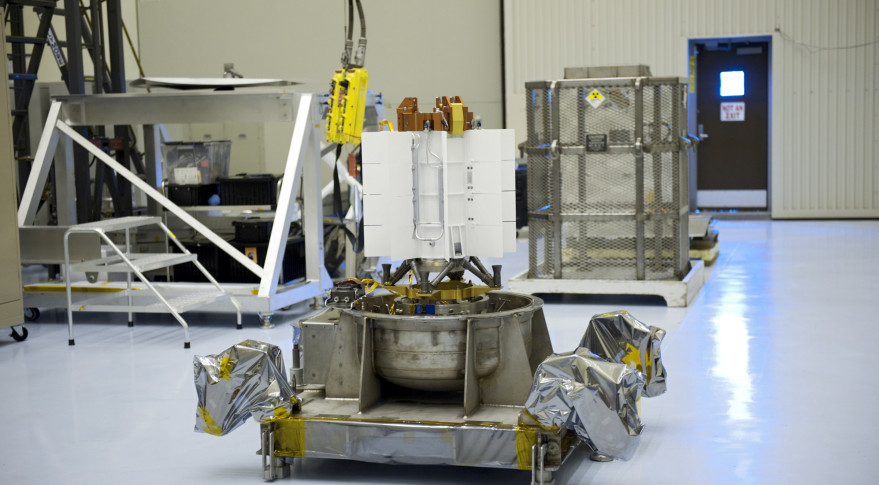Plutonium Supply for NASA Missions Faces Long-Term Challenges

WASHINGTON — While NASA and the Department of Energy (DOE) have restarted production of a plutonium isotope used to power some space missions, a new report warns of challenges that could threaten its long-term supply.
The Oct. 4 report by the Government Accountability Office, tied to a House space subcommittee hearing on the subject, said that while there is sufficient plutonium-238 in stockpiles now for missions planned through the mid-2020s, scaling up production of the isotope faces a number of technical issues.
"DOE is making progress towards producing new plutonium-238," said Shelby Oakley, director of acquisition and sourcing management at the GAO, in testimony at the hearing. "However, DOE faces challenges in hiring and training the necessary workforce, perfecting and scaling up chemical processing, and ensuring the availability of reactors that must be addressed or its ability to meet NASA's needs could be jeopardized." [US Makes Plutonium-238 for Deep-Space Exploration (Video)]
Oakley said that DOE lacked a long-term plan with milestones to show progress towards its ultimate goal of producing 1.5 kilograms of plutonium-238 a year by 2025. She said the department has accepted recommendations in the GAO's report regarding better communications with NASA on these issues.
NASA and DOE began an effort in 2011 to restart plutonium-238 production, last made in the U.S. in the late 1980s. An initial production campaign in 2015 produced 100 grams of isotope, said Tracey Bishop, deputy assistant secretary for nuclear infrastructure programs at DOE, at the hearing. A second batch will be completed later this fall.
Plutonium-238, or Pu-238, has long been used by NASA in radioisotope thermoelectric generators (RTGs), which convert the heat produced by radioactive delay of the isotope into electrical power. The agency has used RTGs on many missions where solar power is not feasible, including those into the outer solar system.
There is about 35 kilograms of plutonium-238 in current U.S. stockpiles available to NASA, said David Schurr, deputy director of the agency's planetary science division, an amount that includes plutonium purchased from Russia. Of that amount, 17 kilograms is ready for use now, while the other 18 kilograms would need to be mixed with new plutonium in order to be viable for use in RTGs.
Get the Space.com Newsletter
Breaking space news, the latest updates on rocket launches, skywatching events and more!
Only one NASA mission currently in development requires an RTG: the Mars 2020 rover, which will use an RTG similar to that powering the Curiosity rover. NASA is making available RTGs for the next New Frontiers medium-class planetary mission, which the agency plans to select by mid-2019 for launch in 2025.
Current supplies, plus new production, are enough for those missions and beyond, according to Schurr. "DOE will have sufficient material for fabrication of heat sources for expected planetary science missions through 2030," he said. "In addition, NASA and DOE have begun exploring options to increase production rates, if needed, to support any increased future demand."
GAO's Oakley agreed, noting that limited supplies of plutonium-238 had been a limiting factor in past NASA decisions on what planetary science missions to pursue. "Right now, based on the development of new Pu-238, blended with the old, the needs are met in the near term," she said. "If this new supply of Pu-238 isn't established, and the goals aren't met by DOE, then it could become a limiting factor again in the future."
Several factors beyond the needs for planetary missions could affect the available supply of plutonium-238. One is the development of more efficient alternatives to conventional RTGs, known as dynamic converters, that could generate the same amount of power using less of the isotope. One concept, the Advanced Stirling Radioisotope Generator, could produce the same amount of power as an existing RTG using one-fourth the plutonium.
"Certainly the idea of being able to have a dynamic converter is something that we've been talking about for a long time," said Ralph McNutt, chief scientist for space science in the space exploration sector at the Applied Physics Laboratory who co-chaired a 2009 study on the future of radioisotope power systems. "The problem is these have always fallen short" for technical reasons.
Another issue is potential additional demand for plutonium-238. NASA's projected demand for the isotope dropped from 5 to 1.5 kilograms a year after the end of the Constellation program, which forecast the need for power systems to support human lunar exploration, McNutt said.
That could change if NASA's human spaceflight program is redirected back to the moon, as the Trump administration has directed. Schurr said that NASA's current forecasts for plutonium-238 usage don't include any for human space exploration needs. "At this point, we're not making any assumptions about needs for human exploration," he said. "If, for human spaceflight, we determine there's a value for Pu-238 in their activities, it would likely require an increase in production."
This story was provided by SpaceNews, dedicated to covering all aspects of the space industry.
Join our Space Forums to keep talking space on the latest missions, night sky and more! And if you have a news tip, correction or comment, let us know at: community@space.com.

Jeff Foust is a Senior Staff Writer at SpaceNews, a space industry news magazine and website, where he writes about space policy, commercial spaceflight and other aerospace industry topics. Jeff has a Ph.D. in planetary sciences from the Massachusetts Institute of Technology and earned a bachelor's degree in geophysics and planetary science from the California Institute of Technology. You can see Jeff's latest projects by following him on Twitter.










